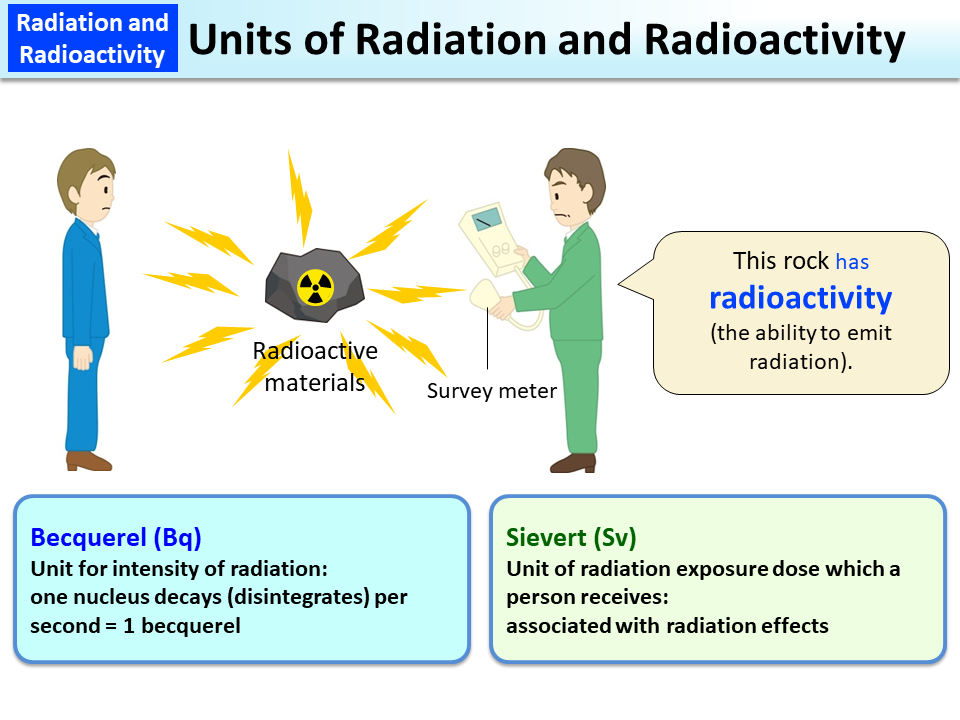Units of Radiation and Radioactivity
Humans cannot sense radiation with their five senses because radiation is invisible and odorless. However, it has a feature that makes measuring easy.
“Becquerel” and “Sievert,” which we have often heard about and seen recently, are units related to radiation. For example, radiation in soil or food can be measured using a special measuring device to find how much radioactive materials are contained in them. The becquerel is a unit to express the intensity of such radiation. The sievert is a unit to express the effect on the human body (for details, refer to Vol. 1, “2.3 Units of Radiation”).
Places where a large amount of radioactive materials exist can be identified with a handheld survey meter. Additionally, the intensity and types of radiation emitted from radioactive materials, as well as personal exposure doses, can be checked with various types of survey meters (for details, refer to Vol. 1, “2.4 Dose Measurement and Calculation”).
Furthermore, based on the results of various investigative studies, radiation doses due to the effect of the accident and natural radiation doses, as well as the total thereof, can be obtained separately.
Means for radiation management and radiation protection are devised taking advantage of this feature of radiation, i.e., the easiness of measurement.
- Included in this reference material on March 31, 2013
- Updated on March 31, 2019

